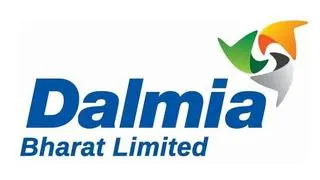Even amid the pandemic, WTO members are engaged in negotiations to discipline the trade-distorting support to agriculture.
For a long time, developing members have been demanding a substantial reduction in the policy space enjoyed by developed members, to support their farmers, which is adversely affecting the welfare of their resource-poor farm communities.
However, developing members have been at the receiving end of criticism with their agricultural support measures being frequently challenged at the WTO in recent times.
Over and above, developed members are seeking steep cuts in the already constrained policy space of developing members by portraying them as major providers of agricultural subsidies.
Left unchallenged, this portrayal can potentially tilt the future trade rules in favour of rich countries at the cost of poor farmers in developing members. So, what is the basis of this narrative?
This claim is based on the provisions of the Amber box of the Agreement on Agriculture (AoA).
Under this, limited trade-distorting support can be provided to farmers in the form of product-specific support such as price support and non-product specific support like input subsidies.
All members are entitled to provide a minimum level of Amber box support under the de minimis limit. This limit for developed members is 5 per cent of the total value of production (VoP) of a basic agricultural product for product-specific support, and VoP of total agriculture for non-product-specific support during a relevant year. For China and other developing members, the limit is 8.5 per cent and 10 per cent, respectively.
Under the AoA, most developing members cannot give support beyond the de minimis level, whereas developed members are not restricted by it due to Aggregate Measurement of Support (AMS) or Amber box entitlement.
This additional entitlement is fixed in monetary terms and allows developed members to provide a high-level of product-specific support, whereas developing members’ support is capped at 10 per cent.
Based on a faulty interpretation of this Amber box, developed members are arguing that Amber box policy space for most developing members is 20 per cent of VoP of total agriculture comprising combined product-specific de minimis limit for all individual products and non-product specific limit.
For developed members, the policy space consists of 10 per cent as combined de minimis limit and AMS entitlement. As the combined de minimis percentage is high for developing members, policy space in monetary terms will increase faster, with an upward trend in the VoP.
As per this approach, the projected policy space under the Amber box for developing members such as China ($738 billion), India ($224 billion) will be higher than all the developed members, including the EU ($155 billion), the US ($83) and Japan ($44 billion) in 2030.
Consequently, demands have been raised for a steep cut in the de minimis limit of developing members.
However, the picture is reversed if per-farmer Amber box support is considered. The projected per-farmer entitlement for India, Indonesia and China would be $1,245, $3,511 and $5,498 for 2030.
For the EU, the US, Japan and Canada, this support would be $23,375, $40,907, $24,222 and $54,279, respectively, for the same year. It clearly highlights the inequities in the per-farmer Amber box entitlement.
This aspect is deliberately ignored by developed members in order to show developing members in poor light.
To ensure a level-playing field for developing members, the per-farmer Amber box entitlement should be at least equal, if not more, for all the members.
What will be the implications of such equalisation?
Assuming all the members have per-farmer Amber Box support entitlement equivalent to that of the US, then policy space for India and China would be 657 per cent and 127 per cent of VoP of total agriculture, respectively, for 2030, in contrast to the applicable combined de minimis limit given in the narrative. On the other hand, in case all members are entitled to per-farmer support equivalent to that of India, then policy space for the the US, EU and Japan would shrink to 0.4 per cent, 1.2 per cent and 2.6 per cent of their VoP, respectively, for 2030.
An agenda needs to be set to make per-farmer entitlement as an integral basis for seeking disciplines on trade-distorting support.
Sharma is Associate Professor and Neogi is Research Fellow at the Centre for WTO Studies, IIFT








Comments
Comments have to be in English, and in full sentences. They cannot be abusive or personal. Please abide by our community guidelines for posting your comments.
We have migrated to a new commenting platform. If you are already a registered user of TheHindu Businessline and logged in, you may continue to engage with our articles. If you do not have an account please register and login to post comments. Users can access their older comments by logging into their accounts on Vuukle.